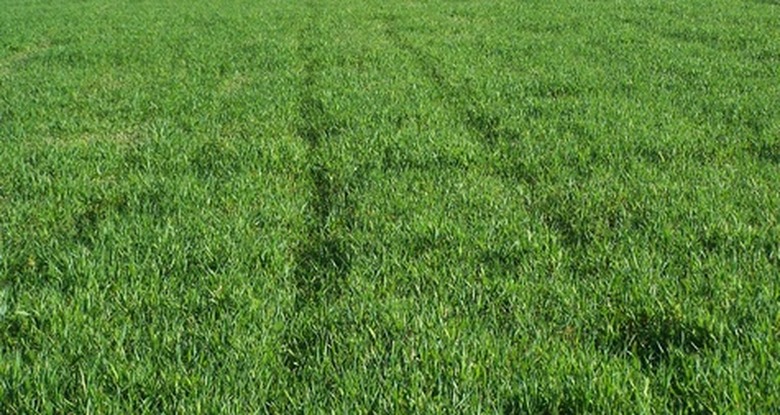How To Fix Lawn Tire Ruts
Someone drove across your lawn, and it might have been you. Now your lawn has big tire ruts and it needs immediate repair. If your ruts happen during the winter when the lawn is dormant, you may want to wait until early spring to refill the ruts with top soil, knock down the edges and reseed at the same time you would normally seed your lawn. If you have ruts in a gorgeous summer lawn, an immediate repair may be a better choice.
Step 1
Rake the sides of the ruts from the grass toward the middle of the rut. Use a garden shovel to even out holes or dips.
Step 2
Add topsoil along the entire rut, and rake the top soil in. Allow for the depth of the sod you will replace.
- Someone drove across your lawn, and it might have been you.
- If your ruts happen during the winter when the lawn is dormant, you may want to wait until early spring to refill the ruts with top soil, knock down the edges and reseed at the same time you would normally seed your lawn.
Step 3
Cut sod from a less visible portion of your lawn using a sod knife and transfer shovel. Press the sod into the repaired ruts so that the new lawn blends with the old lawn. Water in your sod, and keep all foot traffic off that part of the lawn for 2 to 3 weeks until the sod roots into the soil.
Ruts In A Lawn?
If your lawn suffers from drought, it may not be apparent until ruts materialize across the yard. If your grass roots stretch deeply into the ground, they access more moisture during drought periods for better longevity. Avoid mowing during the afternoon when your machine's tires become hot from sunlight exposure — the hot rubber burns the grass and causes dieback within the rut shape. Avoid parking or supporting heavy machinery on your grass as well — keep the weight parked on a concrete driveway. Even foot traffic directed on one area of your grass, such as a walkway shortcut, creates ruts. Most grass species can only withstand moderate foot traffic before they become damaged. Your mower is often the culprit for extensive ruts with wet soil — the wheels gouge the soil.
- Cut sod from a less visible portion of your lawn using a sod knife and transfer shovel.
- Avoid mowing during the afternoon when your machine's tires become hot from sunlight exposure — the hot rubber burns the grass and causes dieback within the rut shape.
Things Needed
- Garden rake
- Garden shovel
- Top soil
- Transfer shovel
- Heavy duty sod knife
- Sod
Tip
Repeated tire ruts may require tilling the soil if it compacts and hardens. Consider installing landscaping that will prevent vehicles from accessing the lawn.
